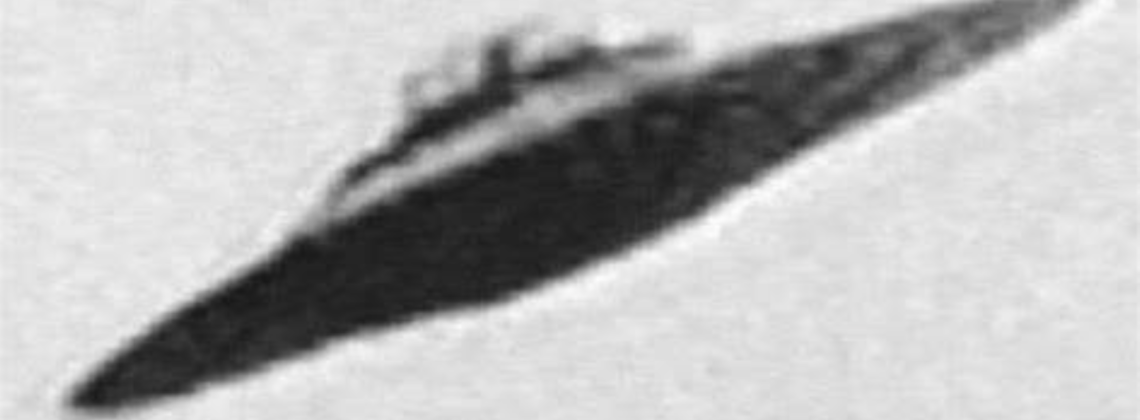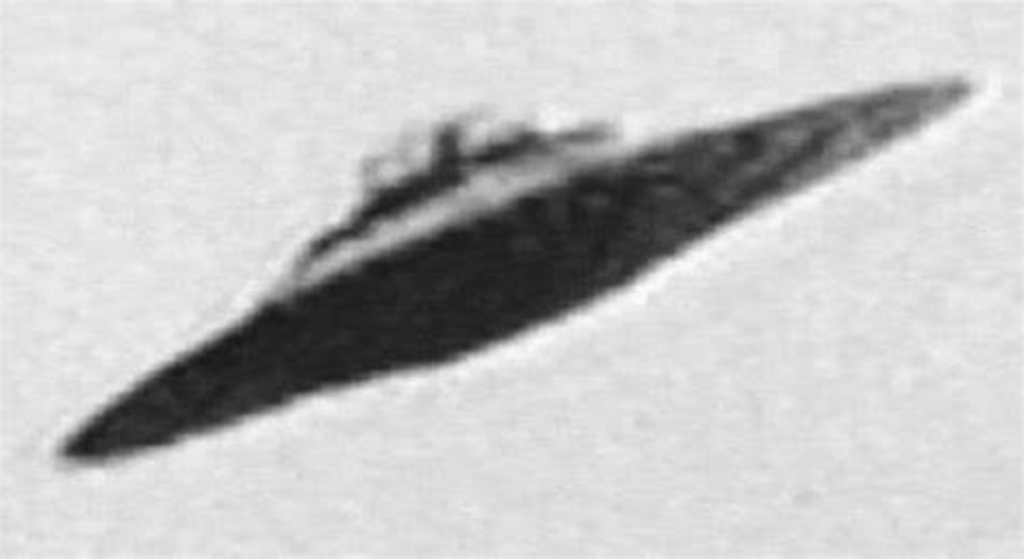

The long tangle between science and religion takes an extraterrestrial turn
For those of you who do not follow UFO news with bated breath: Something appears to be happening.
In 2017, the New York Times revealed on a front-page story that there had existed for half a decade a Pentagon program dedicated to investigating unidentified flying objects—or, as the Pentagon had taken to calling them, unidentified aerial phenomena (UAPs). On top of that, the Pentagon eventually confirmed that several odd videos taken by U.S. Navy pilots while on routine missions were genuine, and seemed to show craft moving in ways no human technology could replicate.
This past June a Pentagon whistleblower went public, telling the media that the U.S. military and its contractors have been operating a long-term “crash retrieval program,” hoping to reverse-engineer technology produced by non-human intelligences. In July he testified before Congress, telling lawmakers that such programs had been unconstitutionally hidden from them.
Easy to miss amid the drama was a million-dollar NASA grant to Princeton’s Center of Theological Inquiry in 2014, in which the government agency asked these theologians to consider how human beings might react to the discovery of non-human intelligence.
Perhaps unsurprisingly, American religionists have been sharply divided on the question of extraterrestrial intelligence, as well as the secondary question as to whether strange lights in the sky represent such intelligence. The rise of the UFO in American culture, I would argue, embodies in its strange, flickering form the impact Americans perceive science has had on the sorts of questions they have often turned to religion to answer, and their reaction to UFOs encapsulates the struggle for meaning that ensues in the aftermath.
In my new book, The Abduction of Betty and Barney Hill, I tell that story, among many others the UFO invokes. Betty and Barney are America’s most famous alien abductees, an interracial New Hampshire couple who in 1961 saw a strange light in the sky over the highway and in 1964 received hypnotic treatment from a psychiatrist that produced memories proving—at least to them—that the creatures piloting that light had captured them onboard for several hours.
The mid-twentieth century was an ideal time for such a couple to offer such a story in the media. The years after the atomic bomb were an era of vast reverence for science, and Americans—particularly religious Americans—were prepared to accept such an extraordinary story as UFOs might offer. The Hills were Unitarians (their denomination joined with another to become the Unitarian Universalist Association the year of the strange sighting), and Unitarians proudly advanced their faith in science as a sign not simply of their Americanism but also their humanism in the years after World War II..
When stories of strange flying craft began appearing in the American media in the late 1940s, the sort of knee-jerk skepticism they would evoke in later decades was not yet fully formed. Many religious leaders took for granted that space flight would soon be a real possibility, and likewise took seriously the possibility that humanity was not alone in the universe. No less a figure than C. S. Lewis, the British author who in the postwar years was among the most respected Christian writers in the Western world, pondered “planet-jumping” and wondered publicly what complications the existence of intelligent alien species would pose to Christian belief.
Similarly, the Lutheran theologian Ted Peters maintained that sufficient credible witnesses had come forward to warrant serious scientific study of UFOs, but that in the meantime their inscrutability was a caution against human pridefulness and idolatry. For their part, Betty and Barney Hill went to the military, to scientists, and to their minister expecting that their story would be believed because of their faith in their own reason and their confidence that science would validate their experience.
Other American Christians, though, far from the genteel mainline, viewed such strategies with hostility. Some conservative evangelical Christians, animated by twin beliefs in the creationist reading of the Book of Genesis and the reality of spiritual warfare, concluded that UFOs were a real phenomenon, rather than misidentifications or hoaxes, but that they could not be emissaries from alien planets because the Bible did not describe the creation of any intelligent species other than humanity.
Some such thinkers like the preachers Carl McIntire and O.L. Jaggers, insisted that flying saucers were both real and supernatural. McIntire, one of the most prominent leaders of postwar Protestant fundamentalism, said soberly that “The flying saucers could very easily be one of these signs of the latter days, bearing testimony to us that we are nearing the time when the Son of God will . . . return.” More dauntingly, Jaggers insisted that some UFOs were angels and others demons, sent to warn or torment a sinful humanity.
But the most prominent and lasting American religious response to UFOs was not in such Christian manifestations but rather the path that Betty and Barney Hill eventually traveled: away from traditional institutional forms of Christianity and toward a world of more fragmented and diverse religious expression.
That world is sometimes called the “New Age,” though scholars have pointed out that it is probably wrong to apply a label that implies some sort of singularity of belief. Ironically, while Americans who followed the spiritual paths emerging in the 1960s often perceived themselves to have discovered the unity at the heart of the human experience, the routes by which they traveled there were eclectic and diverse, and occasionally mutually exclusive. These routes included practices like psychic readings, channeling, and crystal work; they included belief in reincarnation, karma, astral projection—and, critically, the existence of advanced beings invested in human progress.
After their rejection at the hands of the American scientific and military establishment, the Hills found a home among such people, who easily incorporated their story of abduction and esoteric knowledge into a New Age worldview. By the end of their lives the Hills had blended the story of their encounter with psychic practice, the cosmic progress of all intelligent beings, and channeling of superhuman intelligences.
In a way, the Hills’ own story is a microcosm of the last fifty years of American religious history: a drift away from institution and toward eclectic practice, away from traditional models of Christianity and toward esoteric and Eastern belief, and away from the confidence of mid-century Christian leaders and toward skepticism and self-fashioning. The study of UFOs, it turns out, lies near the heart of much else.
Matthew Bowman is associate professor of history and religion and the Howard W. Hunter Chair of Mormon Studies at Claremont Graduate University. He is the author of a number of books on religion and politics in the United States.
Really don’t understand why Christians would be freaking out (From what I’ve read on line many are). Our God created earth, and everything on it, including man. What is it so surprising if He created other galaxies, other forms of life on other planets?